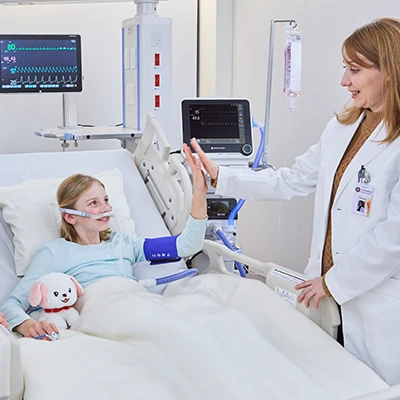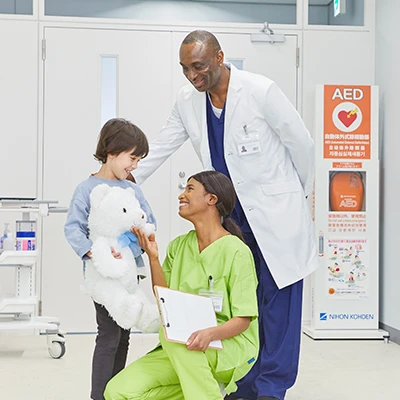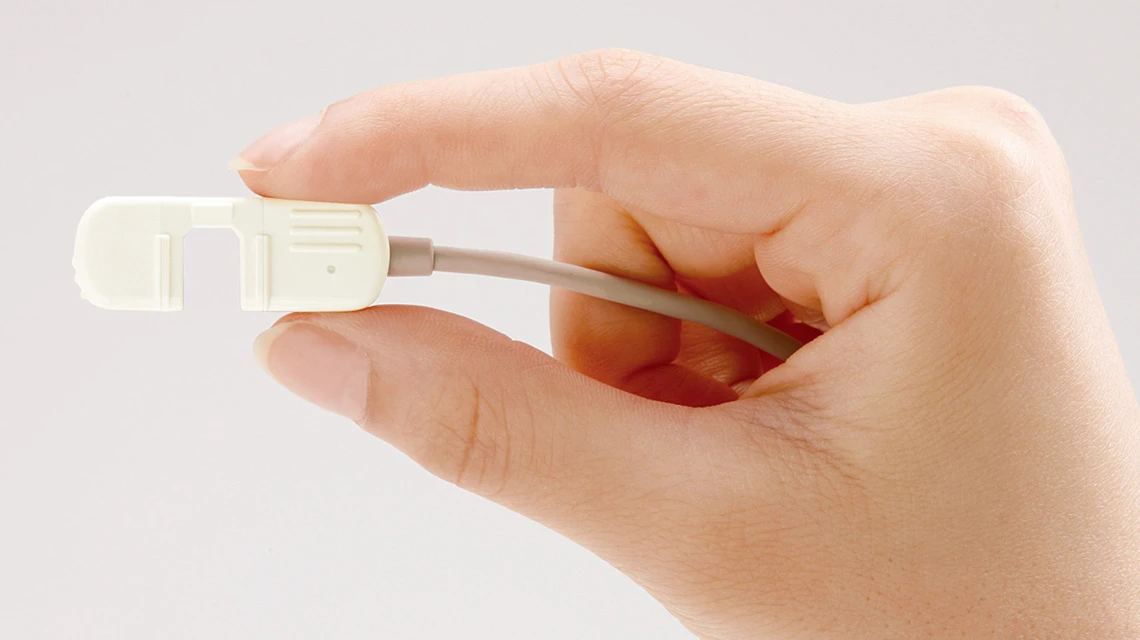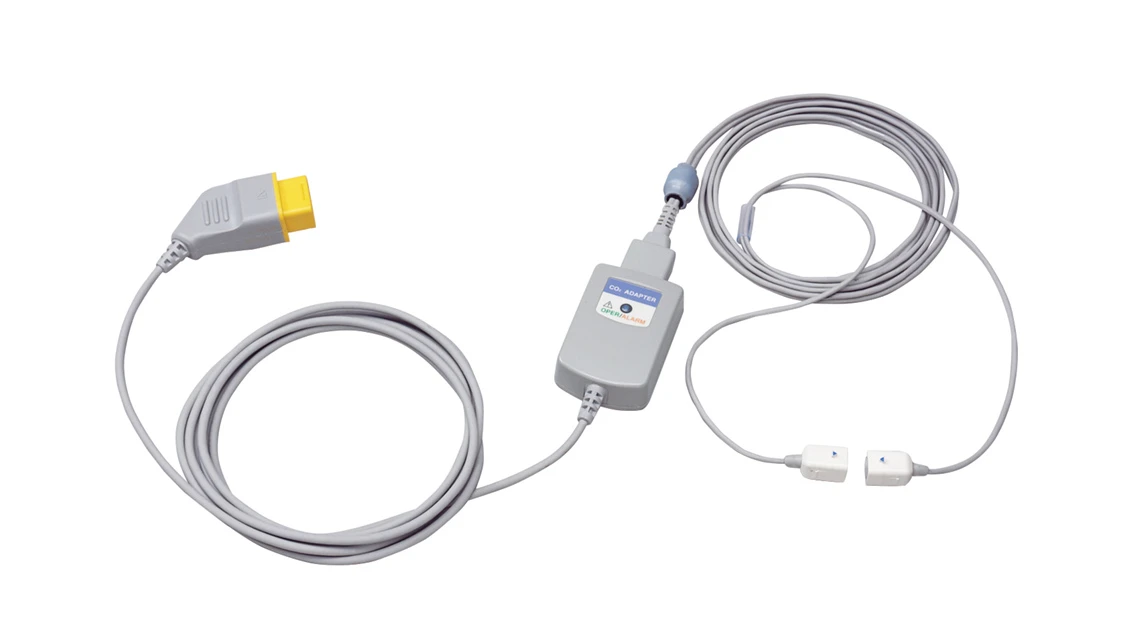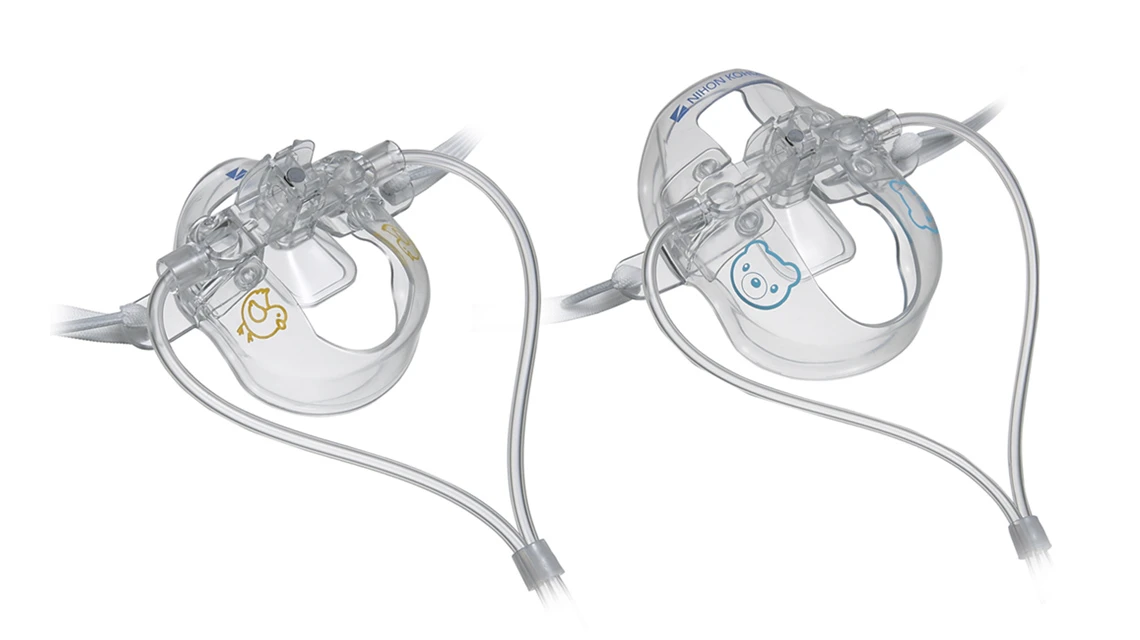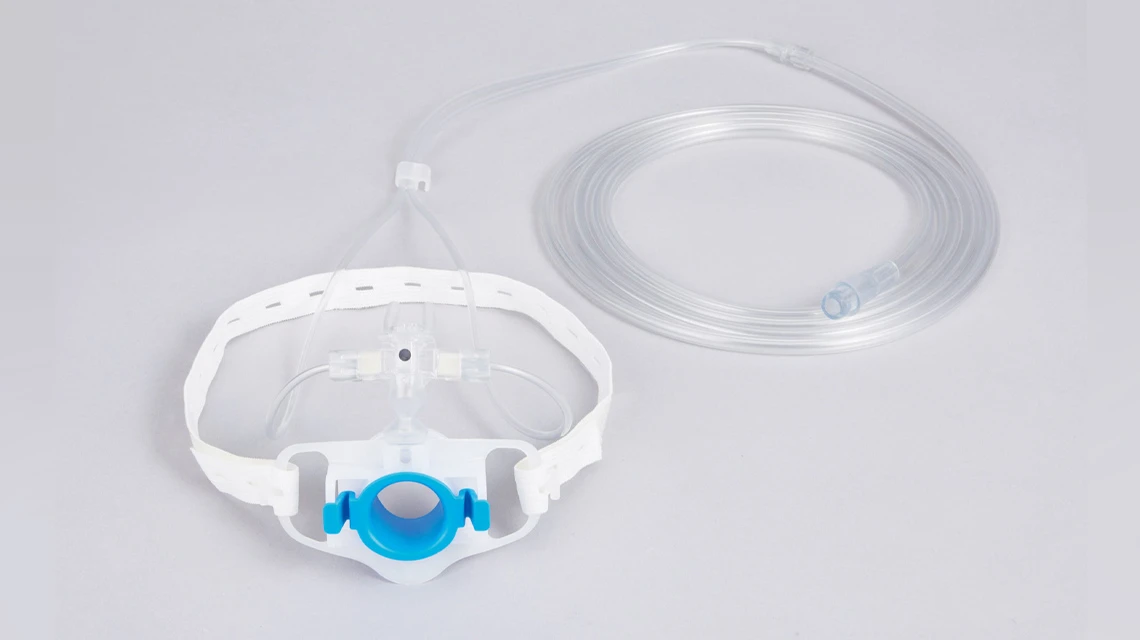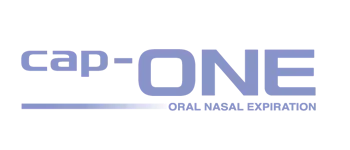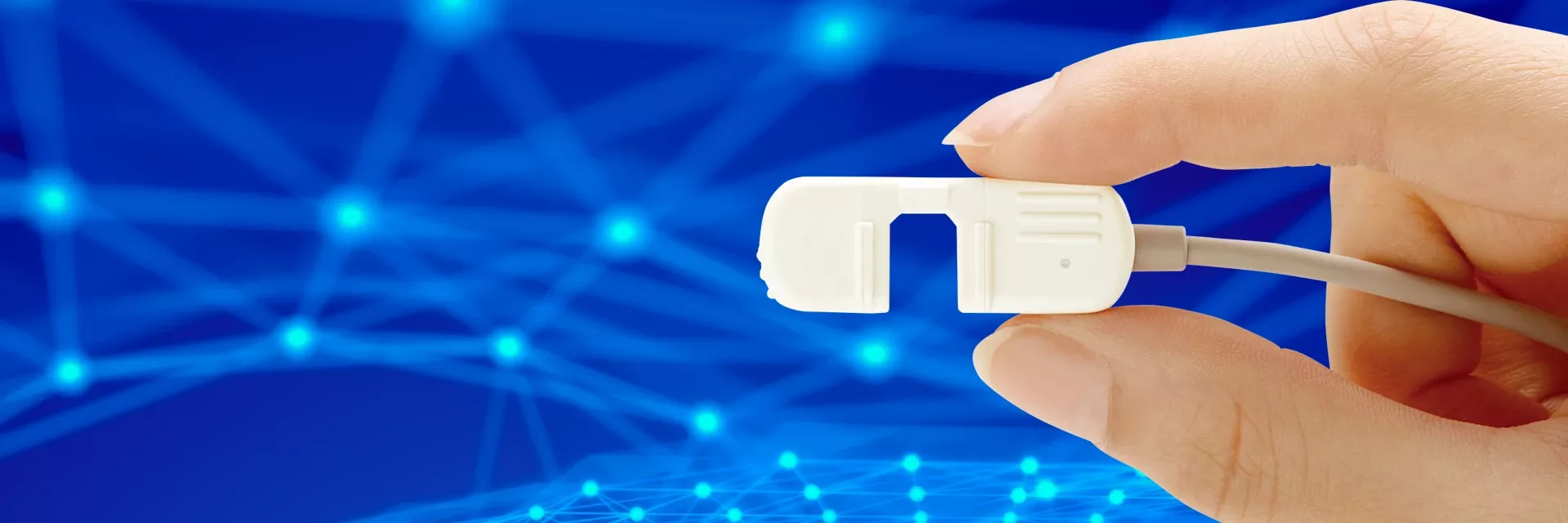
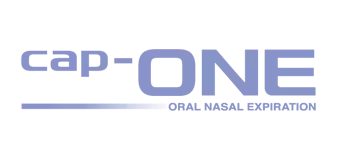
Monitor Your Patient with Reliable cap-ONE Mainstream CO2 Sensor
cap-ONE is Nihon Kohden's unique mainstream CO2 sensor for both intubated and non-intubated patients for safer respiratory management. The ultra compact and light weight sensor and unique adapter provide accurate measurements and reduce the burden on the patients.
We have two measuring methods: the Quantitative method and Semi-quantitative method.
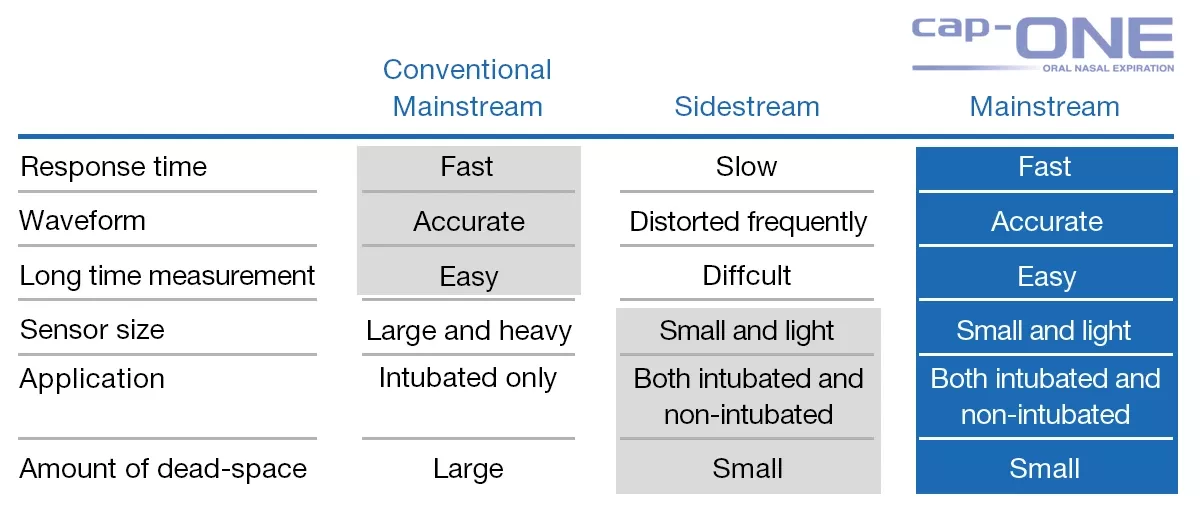
Advantages and disadvantages of conventional mainstream and sidestream sensors vs the cap-ONE mainstream CO2 sensor
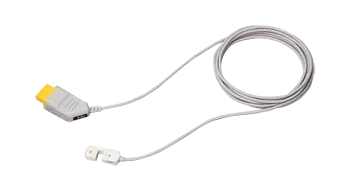
Mainstream CO2 sensor kit
TG-980P series
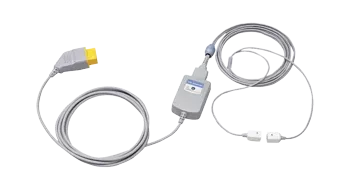
Mainstream CO2 sensor kit
TG-920P series
Mainstream CO2 sensor kit TG-980P series

- Quantitative method
- Sensor itself weighs only 4 g
- Accurate for both intubated and non-intubated patients
- CO2 measurement during upper endoscopy is possible with cap-ONE Biteblock
- Reliable even under humid environment
- Can be used on neonates
With a ventilator and a nebulizer
Because the mist generated in the breathing circuit by a nebulizer creates a very harsh environment for a CO2 sensor which uses infrared light, it was considered impossible to monitor CO2 by a capnometer when a nebulizer is used with a ventilator. However, we have overcome these issues and developed a TG-980P CO2 sensor that enables stable measurement over a long period of time, even when using a nebulizer.

Capnogram obtained by TG-980P, our CO2 sensor while using nebulizer
The upper waveforms are the CO2 partial pressure in exhaled air, and the lower waveform shows the signal light and reference light detected by our CO2 sensor, TG-980P. The exhaled CO2 partial pressure is calculated from the signal and reference light outputs.
When the nebulizer is turned on, the waveforms of both the signal and reference light outputs are blurred due to the mist of the nebulizer. However, with TG-980P which is using Quantitative method, the CO2 measurement is not affected since both are equally affected so an accurate partial pressure of CO2 can be determined.
For intubated patients -Airway adapters
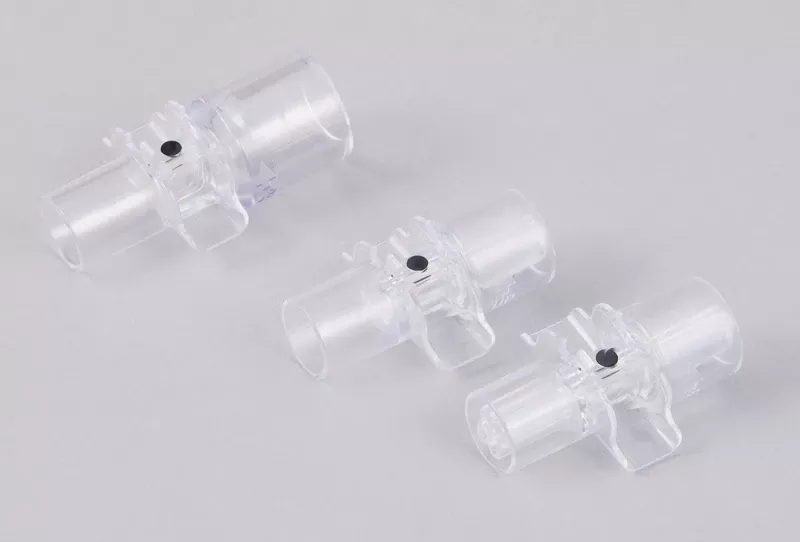
- Quantitative method
- Anti-fogging membrane allows accurate CO2 measurement with no heater (Read more in our Innovative Technologies page)
- The partial pressure of theexpired CO2 with the use of CO2 sensor can be measured
For non-intubated patients –cap-ONE mask and Nasal/Oral adapters
Using TG-980P CO2 sensor together with cap-ONE mask, the sensor can accurately catch oral and nasal exhaled CO2 and reliably detect respiratory variation. In addition, cap-ONE mask is easily used for pediatric patients who are receiving supplemental oxygen. With the unique design, the sensor catches the exhaled gas from the nose and mouth without interference of oxygen supply.
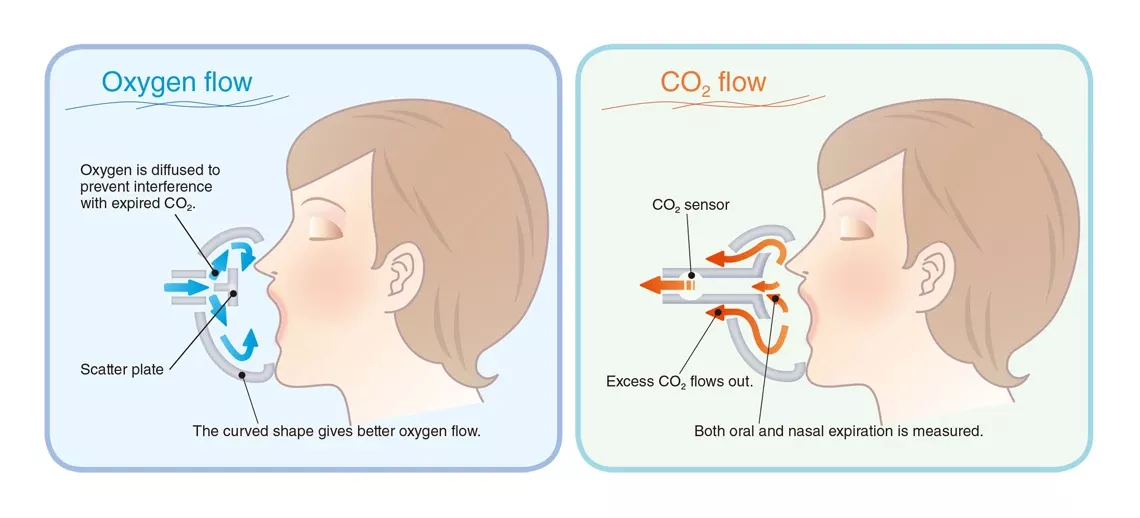
Efficient oxygen supply while measuring ETCO2
NPPV mask
cap-ONE and NPPV mask optimizes the ability to monitor and detect changes in the patient’s condition, improving patient care and out comes.

- Continuous CO2 monitoring during NPPV therapy is available
- Designed to fit any facial shape with minimal patient discomfort and skin damage
- Adjustable forehead cushion support arm
Increase Patient Comfort
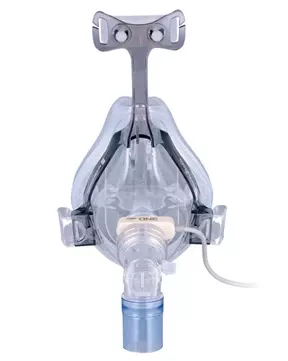
Formfitting NPPV mask
The Nihon Kohden NPPV mask is designed to fit any facial shape with minimal patient discomfort and skin damage.
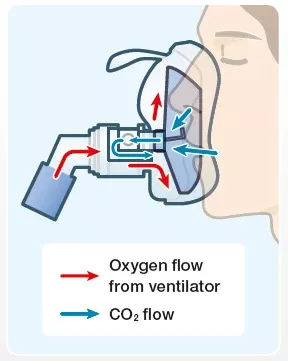
Continuous CO2 monitoring during NPPV therapy
The combination of cap-ONE, Nihon Kohden's new class of ultra-compact CO2 sensor, and unique NPPV mask optimizes the ability to monitor and detect changes in the patient's condition, improving patient care and outcomes. This is particularly useful for measuring CO2 during NPPV therapy.
Lineup
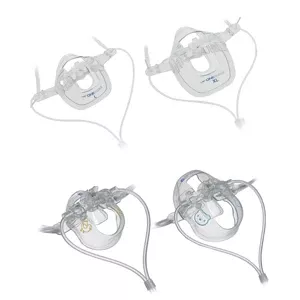
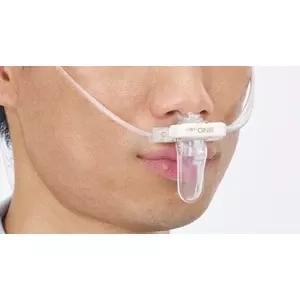
Nasal/Oral adapter
- Intended to sample CO2 and administer supplemental oxygen at the same time
- Can be used for adult to pediatric patient
- For single-patient use only
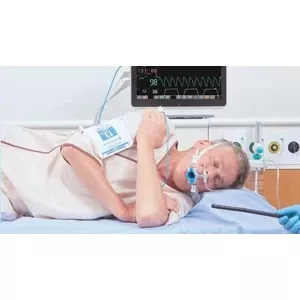
cap-ONE biteblock
- For early detection of respiratory depression
- Stable oxygen supply
- Continuous monitoring of ETCO2 afterendoscopy
Mainstream CO2 sensor kit TG-920P series

- Semi-quantitative method
- No warm-up time and no calibration are required
- Washable
- For both intubated and non-intubated patient
For intubated patients –Airway adapters
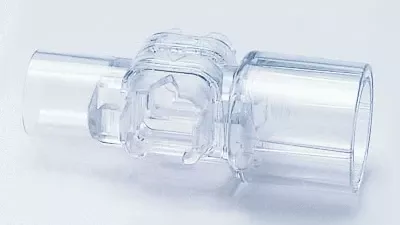
- Dead space volume is 4 mL
- Connects to a respiration device, a mask or an endotracheal tube
- Anti-fogging membrane allows accurate CO2 measurement with no heater (Read more in our Innovative Technologies page)
For non-intubated patients –Nasal adapters

- Unique design catches both nasal/oral expiration
- Dead space volume is 1.2 mL
.custom_background_column2 { display: flex; flex-wrap: wrap; } .button_tech3 { margin-top: 20px; } .custom_button_tech3 { display: flex; align-items: center; justify-content: center; width: 320px; height: 60px; font-size: 16px; border-radius: 10px; border: 1px solid #326bc9; background-color: #326bc9; text-decoration: none; margin: auto; } .custom_button_tech3:hover { background-color: #7F9CCB; border: 1px solid #7F9CCB; color: #7F9CCB; } @media screen and (max-width :768px) { .custom_button_tech3 { width: 100%; } }

